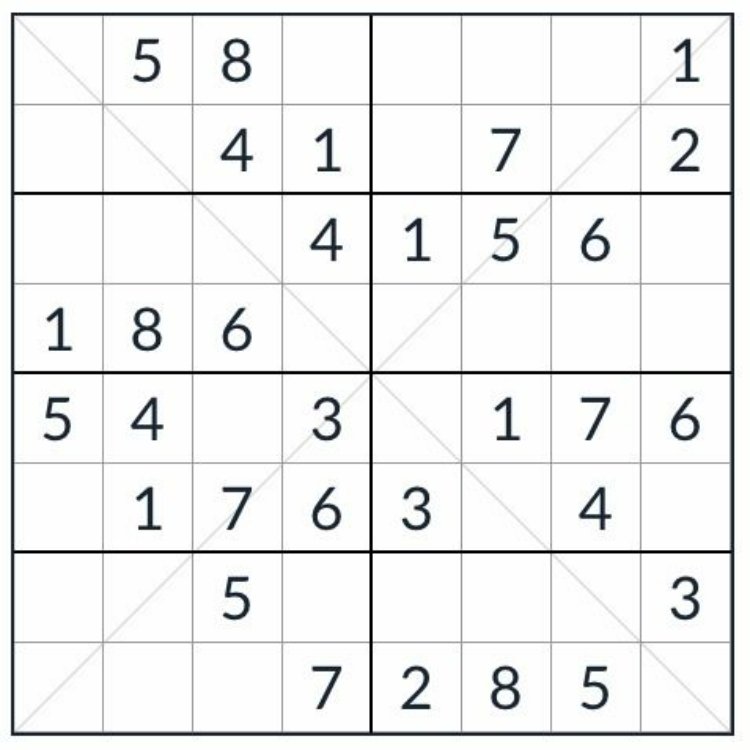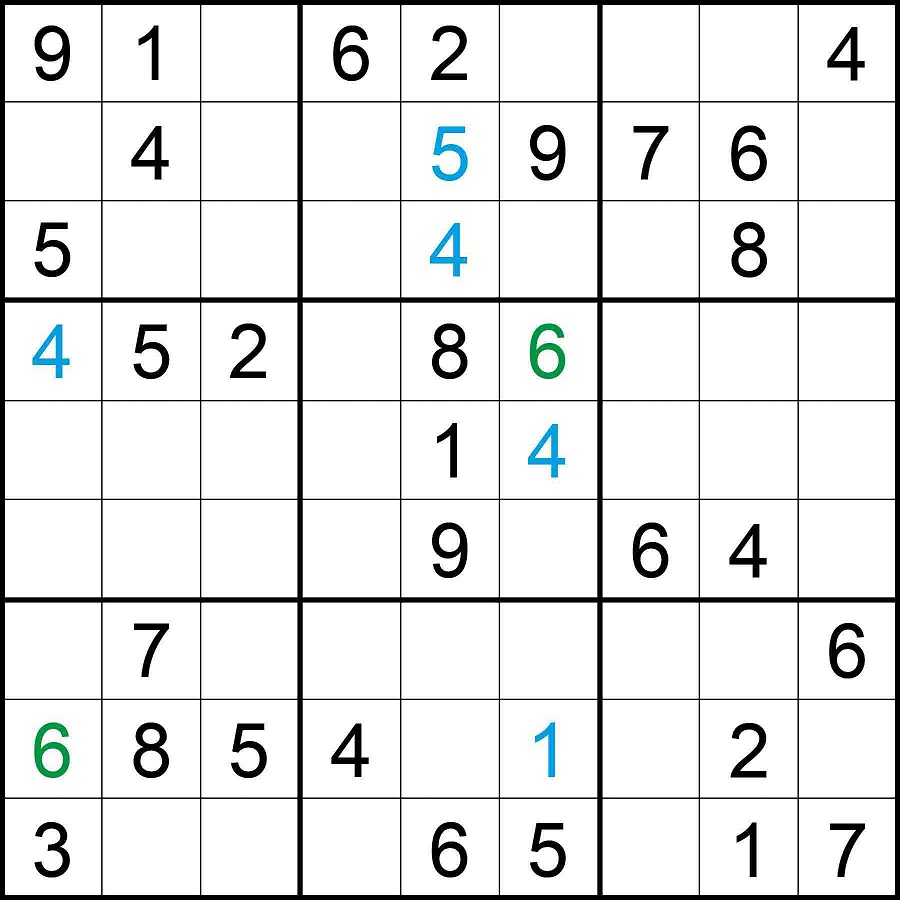Introduction to Sudoku
Sudoku is a popular number puzzle enjoyed worldwide. It involves placing numbers in a 9×9 grid. The grid is divided into smaller 3×3 boxes. Each row, column, and box must have the numbers 1 to 9 with no repeats. The puzzle starts with some numbers already filled in. These act as clues for you to complete the grid. Learning how to solve a sudoku puzzle brings a sense of achievement. It sharpens the mind and improves problem-solving skills. This blog will guide beginners through various strategies to conquer Sudoku puzzles. As we progress, you’ll learn not just to solve the puzzles, but to do so with confidence and efficiency.
Basic Rules of Sudoku
Before diving into the complex techniques on how to solve a sudoku puzzle, it is essential to understand the fundamental rules. These are the backbone of any strategy and will support you as you apply more advanced tactics. Here are the basic rules you need to master:
- The Number Range: Every row, column, and 3×3 box must contain the digits 1 to 9 without repetition.
- Grid Setup: The Sudoku grid is a 9×9 matrix made up of smaller 3×3 boxes often referred to as ‘regions’ or ‘blocks’.
- Starting Clues: The puzzle presents initial numbers. Use these as your starting points to fill in the rest of the grid.
- Empty Spaces: Spaces without numbers are for you to complete. Each must end up with a unique number based on the puzzle’s logic.
- No Guessing: Sudoku relies on logical deduction, not guesswork. Every number placed should have a clear reason behind it.
- Mutual Exclusivity: A number can appear only once in each row, column, and box.
By adhering to these rules, you can ensure a solid foundation as you learn more complex solving strategies. Each of the techniques we’ll discuss in this blog adheres to these essential guidelines. Getting comfortable with these rules will greatly aid your journey in becoming a skilled Sudoku solver.

Important Terminology in Sudoku Puzzles
Before diving deeper into how to solve a sudoku puzzle, it’s crucial to familiarize yourself with some terms. Understanding these will make it easier to follow advanced strategies and discussions. Here are key terms used by Sudoku enthusiasts:
- Cell: The individual square where you place a number.
- Digit: A number that goes into a cell, ranging from 1 to 9.
- Row: A horizontal line of nine cells.
- Column: A vertical line of nine cells.
- Block or Box: A 3×3 grid within the larger Sudoku grid.
- Candidates: Possible numbers that could fit in an unsolved cell.
- Naked Singles: Cells with only one possible candidate.
- Hidden Singles: When a cell is the only one in a row, column, or box that can accommodate a specific number.
- Pencil Marks: Small numbers written in a cell to show candidates.
- Givens: The numbers that are already provided in the puzzle.
Equipped with this vocabulary, you’ll find it easier to apply different strategies and communicate with fellow Sudoku players. Remember, clarity in understanding leads to better problem-solving. So familiarize yourself with these terms to improve your Sudoku solving experiences.
The Single Candidate Strategy
When beginning to learn how to solve a sudoku puzzle, starting with the simplest method is vital. The Single Candidate Strategy, also known as the “Naked Singles” method, is the most straightforward technique. This strategy focuses on finding cells that can only host one possible number, hence the term ‘Single Candidate’.
Here’s how to apply this strategy effectively:
- Scan Each Row, Column, and Box: Examine every part of the grid carefully.
- Identify Cells with One Possibility: Look for cells that can only have one number.
- Fill in the Number: Once you’re sure of the single candidate, fill it in.
- Repeat the Process: Continue the process for all empty cells in the puzzle.
The Single Candidate Strategy is based purely on elimination. It uses the basic rules of no number repetition in a row, column, or block. By systematically working through the puzzle and applying this method, those ‘Naked Singles’ become evident. You gradually reduce the number of empty cells and move closer to solving the puzzle. Beginners will find that this technique significantly simplifies the grid, making it an excellent starting point in Sudoku solving.

The Single Position Technique
When exploring how to solve a sudoku puzzle, the Single Position Technique offers another practical approach for beginners. This method helps you find the unique position for a number within a row, column, or block. Here is a breakdown of steps for applying the Single Position Technique:
- Choose a Number: Start with a number that appears several times across the grid.
- Examine Each Block: Focus on the 3×3 blocks where this number is missing.
- Check for Single Positions: In each block, look where this number can only go in one cell.
- Fill in the Number: Place the number in its unique position within the block.
- Repeat with Other Numbers: Apply the same method with the remaining numbers.
This technique requires you to have a keen eye for detail. Look for patterns and use the process of elimination. It may not be as straightforward as finding Naked Singles, but it’s a powerful tool once mastered. Ensuring that there’s only one choice for a digit’s placement is the core of this tactic. As you get more familiar with the Single Position Technique, you will find your ability to solve sudoku puzzles grows more intuitive. Be patient and practice, and you’ll find Sudoku grids become less challenging with each attempt.
The Scanning Technique
The Scanning Technique is a crucial method to learn how to solve a sudoku puzzle efficiently. This strategy involves systematically checking each row, column, and block for opportunities to place numbers. Here’s how you can apply the Scanning Technique:
- Initial Overview: Start by quickly scanning the whole grid. Look for obvious placements where only one number can logically fit.
- Focus on Rows and Columns: Examine each row and column one at a time. Identify which numbers are missing and where they might fit.
- Check the Blocks: Move on to the 3×3 blocks. See if there are any numbers that are particularly constrained by the placement in their row or column.
- Cross-Checking: Use the process of cross-checking to eliminate impossible placements. This means that if a number can only go in one spot in a row, it cannot be in the same spot in the corresponding column or block.
- Repeat: Continue this process, gradually filling in more numbers and simplifying the puzzle.
This method is about narrowing down possibilities through intersection and elimination, making it easier to see where each number should go. The Scanning Technique will not always solve a Sudoku puzzle entirely, but it is an excellent way to start or continue the solving process where other strategies leave off. Use it in combination with other methods for best results. Keep practicing, and you will see improvement in your ability to solve sudoku puzzles faster and with more confidence.

The Subset Method
The Subset Method is another efficient way to solve a sudoku puzzle. It deals with identifying sets of numbers that can only fit in certain cells within a row, column, or block, hence the name ‘Subset’. Here’s how you can implement the Subset Method effectively:
- Identify Potential Subsets: Look for groups of two or three cells in a row, column, or block where only a few specific numbers can be placed due to the constraints of the other numbers already placed in the grid.
- Analyze the Constraints: Understand which numbers can and cannot fill these cells based on other numbers located in the corresponding rows, columns, and blocks.
- Narrow Down Possibilities: Use the process of elimination to narrow down the possible numbers that could fit in these subsets. This is often referred to as the ‘Locked Candidates’ technique.
- Confirm and Fill: Once a subset is identified, confirm that these are the only possible spots for these numbers. Fill in the numbers accordingly.
- Repeat: Move onto other rows, columns, or blocks to apply the same strategy.
Mastering the Subset Method involves recognizing patterns and using logical reasoning to restrict the number placement. This method may not initially be as straightforward as the Single Candidate Strategy, but it grows more intuitive with practice. It’s particularly useful in more complex puzzles where the simpler techniques might not suffice alone. Practice regularly to become more adept at identifying these subsets, which will improve your overall puzzle-solving skill.
The X-Wing Strategy
The X-Wing Strategy in Sudoku is a more advanced technique. It is useful when simpler strategies don’t resolve the puzzle. This method helps to identify opportunities when two rows (or columns) each contain only two possible cells for a number, forming a rectangle. Here’s how you can utilize the X-Wing Strategy:
- Find Possible X-Wing Patterns: Look for a number that only appears in two spots within two separate rows or columns.
- Form a Rectangle: Visualize a rectangle connecting these four cells across the grid.
- Eliminate Other Possibilities: Conclude that the number must be in one of these spots in each row or column. This lets you remove the number from consideration in the same columns or rows elsewhere in the grid.
- Validate Your Findings: Double-check other rows and columns to ensure consistency with the basic rules of Sudoku.
- Apply the Findings: Use this newfound information to fill in these numbers, or to make other placements in the puzzle easier.
This strategy demands careful attention to detail and a good grasp of Sudoku logic. Patience and consistent practice will help you spot these X-Wing patterns faster. By mastering the X-Wing Strategy, you take one step closer to becoming an expert at how to solve a sudoku puzzle.
Tips for Avoiding Common Sudoku Mistakes
Learning how to solve a sudoku puzzle involves not only mastering strategies but also avoiding common pitfalls. Here are tips to help beginners steer clear of errors and enhance their puzzle-solving skills:
- Double-Check Before Placing: Always re-examine rows, columns, and blocks before filling in a number. This helps prevent accidental repeats.
- Use Pencil Marks Wisely: Pencil in possible candidates, but keep them clear and readable. Erase them as you narrow down your choices.
- Avoid Guessing: Never place a number based on a hunch. Sudoku is a game of logic, and every number should have a reason behind it.
- Take Breaks if Needed: If you’re stuck, step away for a bit. A fresh perspective can help you spot something you missed.
- Progress Step by Step: Solve the easy spots first and gradually move to the harder ones. This builds confidence and avoids overwhelming complexity.
- Keep the Grid Clean: A cluttered grid can lead to confusion. Erase completely and maintain a tidy workspace.
- Practice Consistently: Like any skill, Sudoku gets easier with practice. Solve different levels of puzzles to build your capabilities.
By keeping these tips in mind, beginners can avoid common mistakes that could stifle their progress. With each puzzle you solve, you’ll refine your approach on how to solve a sudoku puzzle and develop a sharp eye for detail.
Conclusion
Mastering how to solve a sudoku puzzle can be both rewarding and brain-stimulating. Throughout this beginner’s guide, we’ve covered essential strategies and tips to help you advance from a novice to a more confident solver. We started with the basic rules that form the foundation of all solving methods, then introduced key terminology to prepare you for more complex concepts. The Single Candidate and Single Position strategies were our starting points, gentle on beginners yet effective at solving simpler puzzles.


